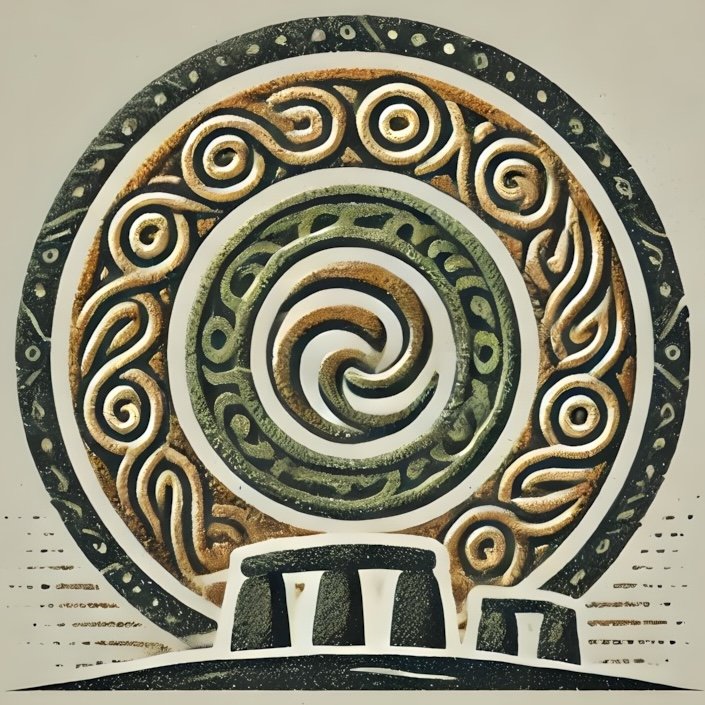The Viking Impact – The Legacy of Viking Influence on Ireland’s Political Landscape
Introduction to Viking Influence in Ireland
The Viking Age, spanning from the late 8th century to the early 11th century, marked a transformative period in Ireland’s history. Norse seafarers, known for their daring raids and explorations, reached the shores of Ireland, leaving an indelible mark on the island’s political landscape. While often remembered for their pillaging, the Vikings also established settlements, engaged in trade, and contributed to the evolution of political structures in Ireland. This chapter explores the multifaceted legacy of Viking influence on Ireland, examining how their presence reshaped the island’s governance, culture, and mythology.
Political Structures Before Viking Arrival
Prior to the arrival of the Vikings, Ireland was characterized by a patchwork of kingdoms and tribal affiliations. The political landscape was dominated by a system of local chieftains and kings, each ruling over their respective territories, known as túatha. These kingdoms were often in conflict, vying for power and resources. The concept of kingship was deeply intertwined with the land, and rulers were expected to protect their people and maintain order through a combination of military strength and alliances.
The Brehon Law system governed social relations and disputes, providing a framework for justice that was largely decentralized. This system allowed for a degree of local autonomy, with each túath having its own customs and practices. However, this fragmented political structure would soon face challenges as the Vikings introduced new dynamics to Ireland’s governance.
Viking Settlements and Urban Development
The Viking incursions began in earnest around 795 AD, with the establishment of coastal settlements that would evolve into thriving urban centers. Notable among these were Dublin, Waterford, Wexford, and Limerick. These towns became hubs of trade and commerce, facilitating connections between Ireland, Britain, and continental Europe. The Vikings brought with them advanced shipbuilding techniques, which allowed for greater maritime navigation and trade routes.
Dublin, in particular, emerged as a significant political and economic center. Established as a longphort (a fortified base), it quickly grew into a bustling city, attracting not only Norse settlers but also Irish traders and craftsmen. The urbanization initiated by the Vikings laid the groundwork for future Irish cities, influencing settlement patterns and urban governance.
Viking Political Systems and Governance
The Vikings introduced new political systems that contrasted sharply with the existing Irish structures. They established a form of governance that combined elements of their own Norse traditions with local practices. The Norse were known for their assemblies, or things, where free men gathered to discuss laws and make decisions. This concept of collective decision-making resonated with some Irish chieftains, leading to a blending of governance styles.
In Viking settlements, local leaders known as jarls emerged, wielding significant power. These jarls often formed alliances with Irish kings, creating a complex web of political relationships that transcended ethnic boundaries. The Vikings’ emphasis on trade and commerce also influenced the political landscape, as economic power became increasingly intertwined with political authority.
Interactions Between Vikings and Irish Kings
The interactions between Vikings and Irish kings were marked by both conflict and cooperation. While initial encounters were often hostile, with raids leading to the sacking of monasteries and towns, over time, a more nuanced relationship developed. Irish kings began to recognize the strategic advantages of aligning with Viking leaders, leading to alliances that would shape the political landscape.
One notable example is the alliance between the Viking leader Sitric Silkenbeard and the Irish king Máel Sechnaill mac Domnaill. This partnership exemplified the pragmatic approach taken by some rulers, as they sought to leverage Viking military strength against rival kingdoms. Such alliances often resulted in the establishment of mixed dynasties, further blending Norse and Irish cultures.
Cultural Exchange and Political Influence
The Viking presence in Ireland facilitated a rich cultural exchange that extended beyond mere political alliances. The Norse brought with them their own customs, art, and religious beliefs, which began to influence Irish society. This cultural intermingling is evident in the art and architecture of the period, where Viking motifs can be found alongside traditional Irish designs.
Moreover, the Vikings played a crucial role in the dissemination of knowledge and trade goods. Their extensive trade networks connected Ireland to distant lands, introducing new technologies, agricultural practices, and luxury items. This exchange not only enriched Irish culture but also contributed to the evolution of political power, as access to resources became a key factor in establishing authority.
The Decline of Viking Power and Its Aftermath
By the late 10th century, the tide began to turn against the Vikings in Ireland. Internal strife, coupled with the rise of powerful Irish kingdoms, led to the gradual decline of Norse influence. The Battle of Clontarf in 1014, where the Irish forces, led by Brian Boru, defeated a Viking coalition, marked a significant turning point. This battle symbolized the end of Viking dominance in Ireland and the resurgence of native Irish power.
However, the legacy of Viking rule did not vanish with their decline. Many Norse settlers assimilated into Irish society, adopting local customs and intermarrying with Irish families. The political structures and urban centers established by the Vikings continued to evolve, laying the foundation for a more unified Irish identity in the centuries to come.
Long-term Political Consequences
The Viking impact on Ireland’s political landscape had long-lasting consequences that shaped the island’s future. The introduction of urban centers and trade routes contributed to the development of a more centralized political structure. As Ireland transitioned from a collection of warring kingdoms to a more unified entity, the remnants of Viking governance and trade practices played a crucial role.
The cultural blending that occurred during the Viking Age also influenced the political landscape. The intermingling of Norse and Irish traditions fostered a sense of shared identity, which would later be instrumental in the formation of a cohesive Irish nation. This legacy can still be seen today in the cultural and political fabric of modern Ireland.
Mythological Connections
The Viking presence in Ireland also left its mark on the island’s mythology and folklore. The Norse gods and legends began to intertwine with Irish mythology, creating a rich tapestry of stories that reflected the shared experiences of both cultures. Tales of heroism, adventure, and the supernatural flourished during this period, with figures like Cú Chulainn and the Norse god Thor often appearing in the same narratives.
Sites throughout Ireland, such as the Hill of Tara and the ancient burial mounds of Newgrange, became focal points for these mythological connections. These locations, steeped in history and legend, serve as reminders of the complex interplay between Viking and Irish cultures, inviting visitors to explore the rich tapestry of Ireland’s past.
—
The Viking influence on Ireland’s political landscape was profound and multifaceted, shaping the island’s governance, culture, and mythology in ways that resonate to this day. From the establishment of urban centers to the blending of traditions, the legacy of the Vikings is woven into the very fabric of Irish history, inviting exploration and reflection on a time when two cultures converged to create something uniquely enduring.
meta –

